#Egg Powder Market Size
Explore tagged Tumblr posts
Text
Egg Powder Market is expected to reach US$ 2,236.89 Million by 2030
Renub Research has released a report titled “Global Egg Powder Market: Industry Trends, Share, Size, Growth, Opportunity, and Forecast 2024-2030,” which includes market percentage records and a thorough enterprise analysis. This report looks at the Global Egg Powder Market’s competition, geographic distribution, and growth potential. Expert Insights: Ask Analyst or Download Full Report with TOC…

View On WordPress
#egg powder market#egg powder market by application#egg powder market by countries#egg powder market by product type#egg powder market report#egg powder market share#egg powder market size#global egg powder market
0 notes
Note
What are your favourite ingredients, spices, just food stuff over all?
The two most-used spices in my kitchen are saffron and paprika. I think that these spices are horribly misused and misunderstood, so here is my little guide to using them properly and making the most of their gorgeous colour and flavour.
Saffron is a very expensive spice (unless you grow it yourself, which is actually quite easy to do!) and so you really want to make sure that you’re getting the absolute most out of what little amount you’ve managed to acquire. Buy the smallest amount of the highest quality you can afford—there’s a lot of fake and tampered-with saffron on the market these days! The highest grade of saffron available is called ‘Super Negin’, and this is what will give you that characteristic deep red colour. I have my family send me saffron from home, but if I run out, then I like to buy the saffron offered by the brand Sara Saffron. I also have some English-grown saffron in my kitchen cupboard, and I’d like to try growing my own at some point.
To properly use saffron, take a couple of threads—make sure that your storage container is properly sealed, and shut it quicky again after opening—and grind them to a powder by hand, using a pestle and mortar. Then, put an ice cube or two into a bowl with the saffron, and let the ice melt at room temperature, at its own pace. This is the best way to bring out the natural colour and flavour of the saffron, and works much better than the ordinary method with hot water. You can then use this saffron water to flavour almost anything, from rice and stews all the way to ice cream (bastani).
Paprika is a very powerful and pungent spice, and it always makes me so sad to hear people say that it’s tasteless! It’s one of the most flavourful spices in my cupboard, and being engaged to a Hungarian means that I use it in almost every dish I make. Paprika is made in many different places and comes in many different styles, and I have an entire shelf dedicated to the different styles made in Hungary, but I mostly use pungent (csípős csemege), sweet (édesnemes), and hot (erős) varieties in my cooking. Alajos prefers his paprika smoked, which isn’t traditional in Hungary, and he has vast industrial-sized quantities of his favourite brand shipped over to the UK, but if we ever (God forbid) run out, then I buy from the brand Rubin, a high-quality producer with a UK stockist.
To get the best out of your paprika, you need to toast it a little, but not fully scorch it. The easiest way to do this, I find, is by sautéing onions or garlic in a little hot oil, adding your paprika, and then almost immediately dousing it with whatever sauce you’re cooking with so that it doesn’t burn. Of course, this only really works with stews, soups, and other such dishes, so in other cases, I bloom it in a very small amount of oil, or toast it dry. Experimentation is important here, and there’s no real hard rule, other than that paprika needs to be toasted or bloomed in some way to release its true pungency. It can be added to pretty much anything savoury, from traditional goulashes to sandwich spreads and as a garnish on eggs or salads.
10 notes
·
View notes
Text
Toll House Chocolate Chip Cookies:
2 1/4 cups all-purpose flour
1 teaspoon baking soda
1 teaspoon salt
1 cup butter, softened
3/4 cup sugar
3/4 cup firmly packed brown sugar
1 teaspoon vanilla
2 large eggs
2 cups semi-sweet chocolate chips
1 cup chopped nuts
Mix dry ingredients (flour, baking soda, salt) in a bowl and set aside
Mix wet ingredients (butter, sugar, brown sugar, vanilla) in a large bowl until creamy
Mix in eggs, one at a time
Slowly mix in dry ingredients from bowl
Stir in chocolate chips and nuts with a spoon
Place tablespoon-sized drops of dough onto a baking sheet
Bake at 375 degrees Farenheit for 10 minutes
Cool on baking sheet for 2 minutes, remove and place on cooling rack
Amidst the throes of the Great Depression, Americans were without many of life’s small pleasures. Ingredients were harder to come by because of sinking wages and work opportunities, so most of the 1930s were characterized by cheap, rationed meals of essential nutrients. In 1938, the popularization of the chocolate chip cookie was a much needed relief for many families craving an easy, inexpensive treat to satisfy children and adults alike. From a supposed happy accident to the icon of the Nestlé company, the history of the chocolate chip cookie reveals how a local favorite has the potential to explode in popularity onto a national level.
The most common tale of the creation of the chocolate chip cookie is attributed to Ruth Wakefield, the owner and operator of the Toll House Inn in Whitman, Massachusetts. The story goes that Wakefield had run out of an ingredient (some sources claim it was nuts, others say butter) for her existing ice cream cookie recipe, and in a pinch, she chopped up a chocolate bar and added it to the dough instead. It is said that this last-minute improvisation was so successful that it became a permanent recipe in the kitchen, and soon after gained national fame.(1) However, as is common when exploring the origin of well-known innovations, there were some embellishments to the tale throughout its history. The true story of this delicious creation likely has less to do with coincidence and more to do with baking knowledge and business savvy.
Ruth Wakefield deserves a tremendous amount of credit for the popularization of the chocolate chip cookie, but evidence suggests that when she served them for the first time, similar cookies were already on the market in some places. As early as 1928, newspaper advertisements for a cookie that, for all intents and purposes, resembles the chocolate chip cookie were being circulated, meaning they were a delicacy already being sold in some bakeries and inns.(2) In that period, chocolate was more accessible than ever with cocoa powder on grocery store shelves, so naturally chocolate was slowly finding its place among common baked goods. As the culinary world increasingly embraced chocolate, innovative chefs like Wakefield added it into recipes for existing treats. Though she was not the sole inventor of the chocolate chip cookie, Wakefield’s real story is emblematic of the circumstances of the time, and the process by which the cookie was created.

The Toll House Inn, opened in 1930, was a small restaurant that Ruth Wakefield owned with her husband, Kenneth, which served travelers and locals alike. With her college education as a dietician and experience as a chef, Wakefield’s menu appealed to the masses, especially her hand-crafted desserts. The particular cookie that Wakefield first added “chipped” chocolate to was meant to accompany ice cream, a kind of drop cookie that was a crunchy side dish to compliment the smoothness of ice cream.(3) It is unlikely that the circumstances leading up to Wakefield’s famous “Chocolate Crunch Cookie,” which was published in her 1938 “Tried and True” cookbook, were anything but the result of baking skill and purposeful creation.(4) The simple yet delectable treat was a massive success, and the Toll House Inn boasted the patronage of names like Eleanor Roosevelt and Joe DiMaggio stopping in to try Wakefield’s chocolate chip cookies.(5) The true popularity boom came when Betty Crocker featured the recipe for Toll House chocolate chip cookies on her radio show, giving Americans a twist on a dessert made of inexpensive and widely available goods. In 1939, the Nestlé company acquired the recipe and the Toll House name from the Wakefields in exchange for a lifetime supply of chocolate and, arbitrarily, one dollar.(6)

The social importance of chocolate chip cookies was concretely verified during the years after the Nestlé deal, as the beginning of World War Two sent Americans overseas by the thousands. Soldiers in other countries craved a piece of home during their time away, and chocolate chip cookies became a staple of care packages sent to Europe and the Pacific Theater. Seeing an opportunity for profit, Nestlé and other chocolate companies ran advertisements encouraging women to bake cookies with what little chocolate was available to send overseas: “for that soldier boy of yours.”(7)
As chocolate chip cookies were being sent abroad, they were cemented into the minds of Americans as something to comfort us in hard times, just as they did during the Great Depression years before. The chocolate chip cookie, with its cheap ingredients, simple baking process, and warm, spirit-lifting sweetness, has defined the tastes of Americans since its creation in the early 20th century. The story of the Toll House Inn is representative of the kind of innovations that Americans were creating in the face of a massive financial depression, and how innovation is sometimes rewarded with national acclaim.
Jon Michaud, “Sweet Morsels: A History of the Chocolate Chip Cookie,” The New Yorker, December 19th, 2013, https://www.newyorker.com/culture/culture-desk/sweet-morsels-a-history-of-the-chocolate-chip-cookie
Claudia Geib, “The Best Known Chocolate Chip Cookie Origin is a Myth,” Eater, April 21st, 2022, https://www.eater.com/23033968/toll-house-chocolate-chip-cookie-myth
Claudia Geib, “The Best Known Chocolate Chip Cookie Origin is a Myth”
The Sugar Association, “The History of the Chocolate Chip Cookie,” Sugar.org, March, 2020, https://www.sugar.org/blog/the-history-of-the-chocolate-chip-cookie/#:~:text=The%20original%20recipe%20was%20created,intended%20to%20accompany%20ice%20cream.
Claudia Geib, “The Best Known Chocolate Chip Cookie Origin is a Myth”
Jon Michaud, “Sweet Morsels: A History of the Chocolate Chip Cookie”
Jon Michaud, “Sweet Morsels: A History of the Chocolate Chip Cookie”
2 notes
·
View notes
Text
Character Intro: Pherusa (Kingdom of Ichor)

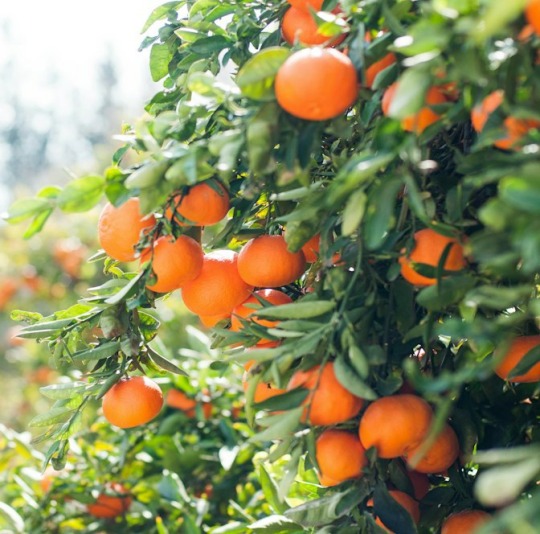
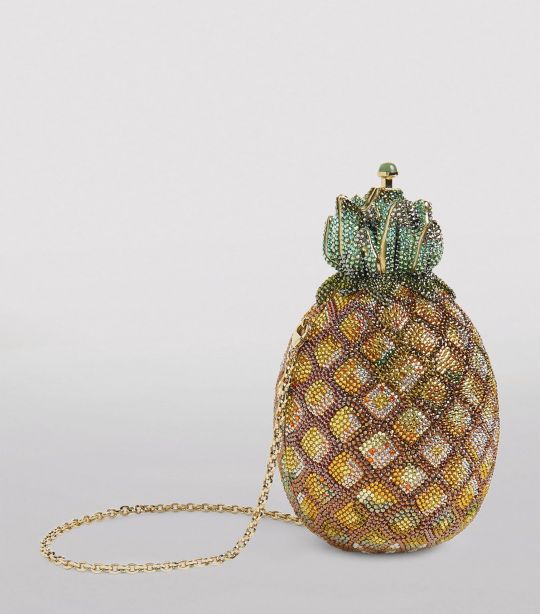

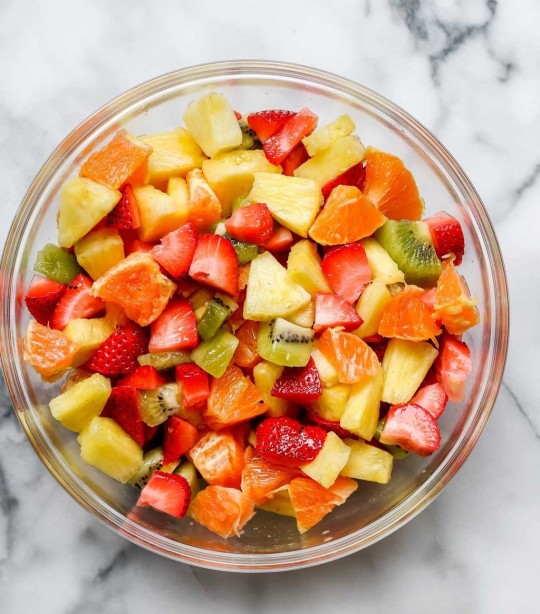


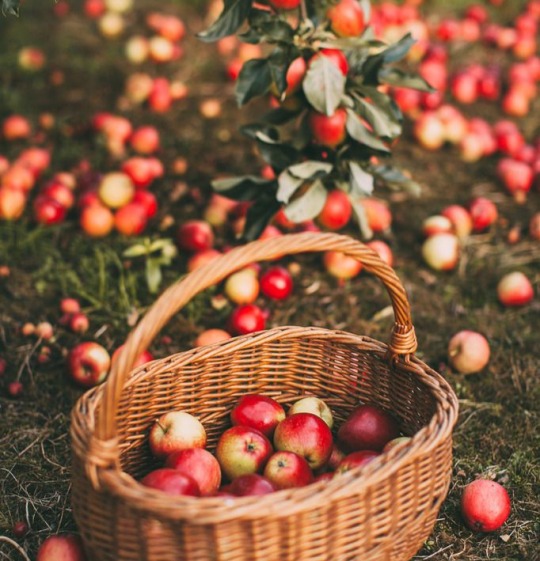
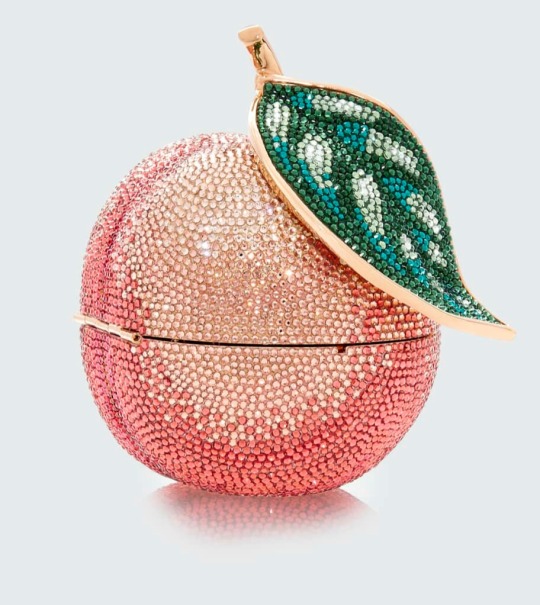
Nicknames- The Golly Goddess, Bearer of Fruits by the people of Olympius
Mom by her daughters
Age- 37 (immortal)
Location- Arcadia, Olympius
Personality- She's a bubbly goddess with a carefree aura. She's creative, free-spirited, & close to nature. She's a lesbian and is casually dating.
She has the standard abilities of a goddess except shapeshifting. As the goddess of substance & farm estates her other powers/abilities include karpokinesis (fruit manipulation/generation), juice manipulation, limited photokinesis, being able to telekinetically control farming equipment, limited chlorokinesis (as it pertains to hay & grass), and limited atmokinesis.
Pherusa is the mother of the seasonal goddesses- Thallo (goddess of spring & new growth), Auxo (goddess of summer, vegetation, & plants), and Carpo (goddess of autumn & fruits).
She lives in the state of Arcadia in a french style cottage. There's a few acres of farmland along with a LARGE orchard (meant for fruit production). The interior design of the cottage is very romantic and provençal with a mix of vintage and country furniture pieces, a color palette of cream, beige, tawny, pale blue, & pastel yellow, artwork with pastural or natural themes, natural hardwood flooring, and toile de juoy patterns on wallpaper & curtains.
In addition to the farm animals, she has an animal companion- a female griffin named Honey. Honey is Pherusa's usual mode of transportation when traveling great distances, like visiting her daughters in New Olympus or visiting faraway friends. She mostly gets around in her classic 70's style bright orange VW beetle.
She always starts of her mornings with a session of yoga.
Instead of lotion, she moisturizes her skin with coconut oil.
Pherusa loves her "chickadees." She doesn't play favorites and loves her daughters equally. Pherusa not only makes it a priority to spend time as a family, but also individually- whether it's surfing with Auxo, bike riding with Thallo, or going to the farmer's market with Carpo. They also play music together with Pherusa being a featured artist on The Gypsy Belles' bonus track "Prairie Poets" on their album A Vintage Year.
She can play the acoustic guitar, autoharp, & the dobro!
A typical breakfast for her is belgian style whole grain waffles topped with cottage cheese, sauteed apples, maple syrup, and cinnamon sugar along with a fruit salad parfait & scrambled eggs added with sausage, onions, peppers, and tomatoes. She also likes several slices of lightly toasted white bread topped with butter & different kinds of fruit marmalades. From her own cereal brand her favorites are the summer berries flavor, the vanilla spice flakes, the apple cinnamon o's, and the oatmeal peanut butter.
Pherusa keeps her red hair in a neck length lob. She likes the Glory's Crown citrus and herbal musk shampoo & conditioner as well as the apricot oil hair spray.
Instead of perfume, she prefers to use fruit essential oils (behind her ears, inside her wrists, on her ankles, between her bosom, and on the side of her neck). Her favorite essential oils are the pink grapefruit, passionfruit, cherry, & apple.
Pherusa's closet consists of form hugging dresses, wedges, platform sandals, flowy mini skirts, bright colors, bold patterns, high waisted flare pants, and peasant blouses.
A go-to drink for her is her homemade carrot juice. She also likes coconut water, watermelon juice, citrus infused mineral water, iced tea, peach lemonade, ginger ale, pomegranate tea, lychee-passionfruit boba tea, red sangrias, aperol spritzes, orange soda, appletinis, cherry sazeracs, seabreeze cocktails, and champagne. Usuals from The Roasted Bean include a large iced green tea & an olympian sized fruit punch splash.
Pherusa's favorite makeup products to use is the Olmorfia blush powder in "strawberry crush", the plumping lip glaze in "persimmon" (a bold reddish brown), and the Museology UV liquid eyeliner in "electric shock", a bright neon yellow.
Her ultimate guilty pleasure is a large pizza topped with pineapple, yellow peppers, & jalapeños.
Pherusa's primary source of income comes from her cereal brand Golly Grains, the 2nd most popular after Earthly Harvest. Golly Grains' animated commercials and online ads are quite popular as well as its slogan- "A golly way to start your day!" To help out her daughters, she models for their clothing brand Treis Epochés.
From The Bread Box, she likes the chicken salad sandwich along with a watermelon feta salad.
Some of her favorite frozen treats include pineapple coconut ice cream, mango sorbet, and pomegranate sorbet.
In the pantheon Pherusa has a deep friendship with most of the agricultural deities like Demeter (goddess of the harvest & agriculture) and Eunostos & Promylaia (goddesses of the flour mill). Pherusa is the noná to Krysothemis (Kristy), the daughter of Karmanor (demi-god of the harvest). Her best friend is his sister Karme (demi-goddess of the harvest). Pherusa loves traveling to Eleusis to see her, looking forward to her delicious corn pudding! She even views Eubouleus (god of the swine & ploughing) as a father figure.
She's also friends with Kéfi (goddess of mirth), Apheleia (goddess of simplicity), Oeno (goddess of berries & wine), Thilasmós (goddess of nursing), Anatole (goddess of sunrise), Damia (goddess of naturalness), Elais (goddess of oil), Spermo (goddess of grains), Nymphe (goddess of self-care), Rhapso (goddess of sewing), Hestia (goddess of the hearth), Philotes (goddess of sex, friendship, & affection), Pan (god of the wild, satyrs, shepherds, & rustic music), Livádi (goddess of meadows), Eváeros (goddess of air & the zodiacs), and Záchari (god of confectionery).
She loves snacking on plaintain chips.
Her and Thilasmós often bond over about the attention and comments they get due to their ample chests.
Pherusa went to New Olympus Fashion Week for the first time last year when Rhapso got her & Eváeros exclusive front-row tickets.
She appeared once in a nude spread for Zeus' mens' magazine. Her photoshoot "broke the internet" for a few minutes when the images made its way on Fatestagram.
Some of her favorite desserts are Záchari's honeyed fig crostatas (dusted on top with an extra helping of powdered sugar), Eváeros' ambrosia salad, Karme's peach bourbon upside-down bundt cake, and the orange lemon pound cake from Hollyhock's Bakery.
As for her love life, Pherusa is enjoying her singledom and meeting new people. Her last serious relationship was with an anthousai named Amaryllis. Pherusa has a few dating apps on her smartphone- also having gone out on more than one date with a maenad named Rhiannon.
A couple of months ago Pherusa flew to Cyprus to hang out with Philotes. They had fun at a nightclub, got a bit tipsy, and ended up making out on the dancefloor. Things got steamier when Philotes went down on her in the nightclub's bathroom. Days later, Philotes reached out to her to "clear the air" with them admitting their attraction to each other. Pherusa was taken aback when Philotes offered up the idea to sleep with each other while her husband Priapus (god of fertility, vegetable gardens, livestock, sexuality, & masculinity) watches, without participating. She hasn't given her an answer yet.
Pherusa has a growing collection of Diamond Ave. fruit themed jeweled clutches. She herself was able to get the orange slice one (which costs 4,000 drachmas) while Karme got her the peach shaped one. As a summer solstice gift last year, Rhapso got her the pineapple shaped one!
In her free time she enjoys sunbathing, gardening, swimming, cooking, baking, bike riding, reading, shopping, spending time with her daughters, golf, fishing, and spending time with her friends.
Her favorite meals include chilled peach soup with fresh goat cheese, roasted lamb chops with a cherry glaze, and coconut chicken curry with white rice.
"If you eat today, thank a farmer."
#my oc#my character#oc character#my oc character#oc intro#character intro#oc introduction#character introduction#modern greek gods#modern greek mythology#greek myth retellings#greek goddess#greek goddesses#greek mythology#greek pantheon#greek myths
1 note
·
View note
Text
Volume 5 Part 1
Week 4
I definitely tried to fit as much as I could into this last week to ensure I didn’t leave Korea feeling like I missed something. It was a little tiring doing that and wrapping up classes with final projects, but I’m ready to come home.
To start off, Grace, Bianca, and I headed over to Itaewon on Sunday. To be honest, I wasn’t really sure what there was to do besides the club nightlife, but I thought that I can’t leave without paying at least one visit. The other two didn’t want to go to the famous street where the tragic crowd crushing incident occurred last Halloween so we ventured to the main streets and some smaller ones. We were feeling peckish after arrival so we went to a cafe that sold Western styled breakfast.
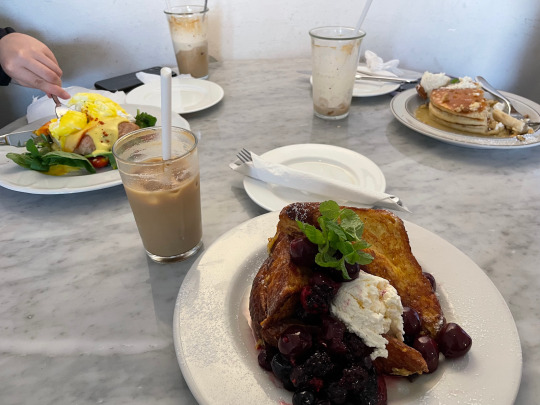
I got berry compote french toast, Bianca got egg's Benedict, and Grace got banana walnut pancakes
They weren’t really good at serving us at the same time so I got my dish a good while after the others. Grace also eats faster than my boyfriend so it felt a little weird eating when she was almost done but that’s pretty much how it’s been when hanging out with her.
Grace is apparently a big Barbie fan, so much so that it’s been on her list of possible Halloween costumes for a couple of years now. It just so happens that there was a Barbie cafe in Itaewon so we tried going there. Unfortunately all the tables were full and we had to put down a number, but only Grace had a working number. We never got a call and it was probably because it was an American number or something.

We went to a bingsu place instead to combat the heat though. Bianca and I shared this injeolmi flavored one. Injeolmi is basically a sweet rice cake covered in roasted soybean powder. I’m not sure how to really describe it, but the powder is dry and tastes nutty. I’m pretty sure it’s the same powder used on Japanese raindrop cakes.
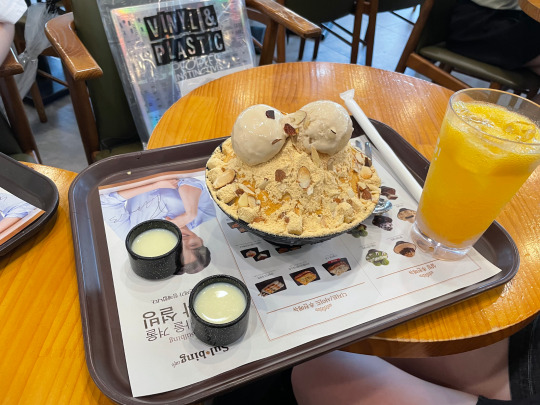
It was also raining that day so we kind of decided to head back. There wasn’t much that caught our attention in Itaewon, but it was nice to visit.
On Monday, our painting teacher made us paint outside. It was not the most ideal, but I ended up painting a view of campus.

After class, the three of us headed back to Myeongdong to see the nightlife and street food market. I was pretty dead set on coming back with cash. Before we got into the vendors, we did some shopping and got dinner.

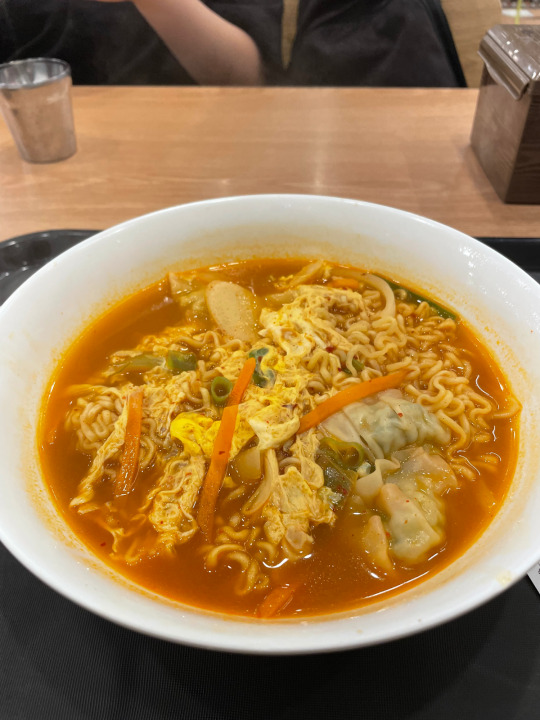
Unfortunately, I wasn’t able to get photos of the fruit mochi I bought, but it was seriously worth my money. It looked like this though.

I also got this honeycomb and ice cream taiyaki. You’ve probably seen taiyaki before – it’s that fish-shaped cake. They served it with a small chunk of honeycomb and that was the first time I tried actual honeycomb which was cool. It was fun chewing on the wax.
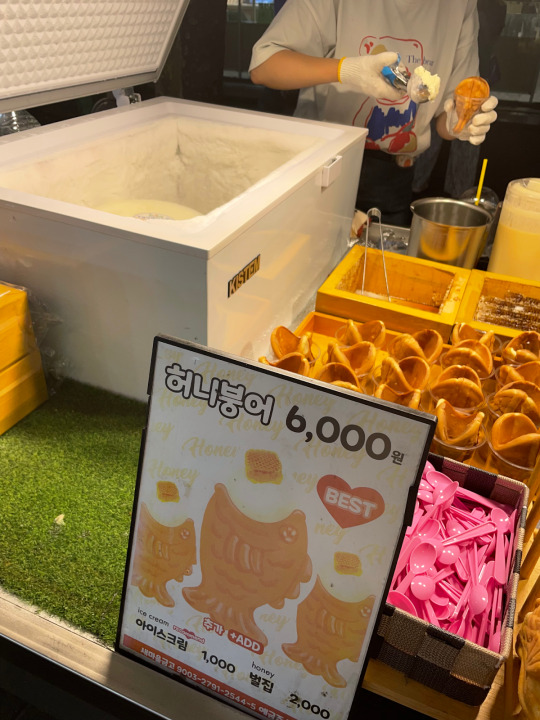
On Tuesday, Grace and I got to go to the Starfield COEX Mall for our visual journal field trip. It’s pretty awesome that we were able to go on so many field trips for that class and that we got to go to a mall of all places. The mall was absolutely enormous. There was only one floor for shops, but we literally kept getting lost because of its size. Other cool things were attached like this massive library, aquarium, and movie theater.


We sat down inside the mall for some food and got what was probably the most incorrect Indian food I’ve ever had. I say incorrect because the flavor was okay, but the execution and everything was wrong. I’m no Indian food expert, but I questioned a lot of the things. The drinks were wrong and had the wrong consistency, they used the wrong rice (we had to pay and it was such a small portion too) – things like that. I guess that’s what we get for trying to get Indian food inside of a mall in the middle of Korea.
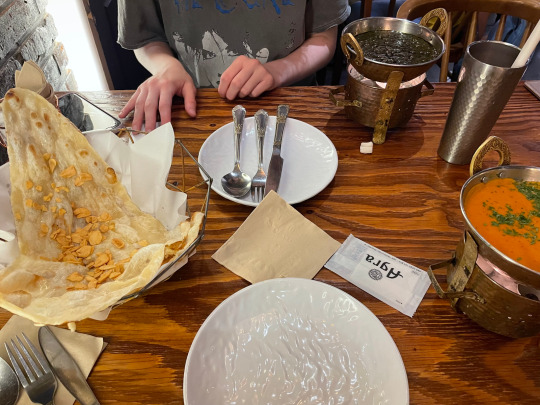
That night’s food made up for it though. One of the girls I hung out with after the Everland trip was turning 21. That same group went out for dinner to celebrate. We got kbbq in Hongdae because we all wanted to experience getting kbbq in Korea at least once. To be completely honest, it was a little pricey for the amount of food, but that was probably because of the fact that we had to share. I guess I’ve been spoiled by the kbbq buffets back home.
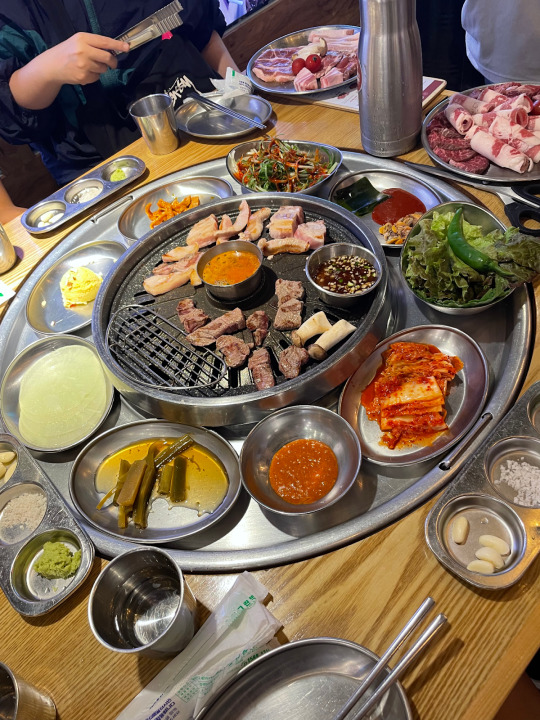
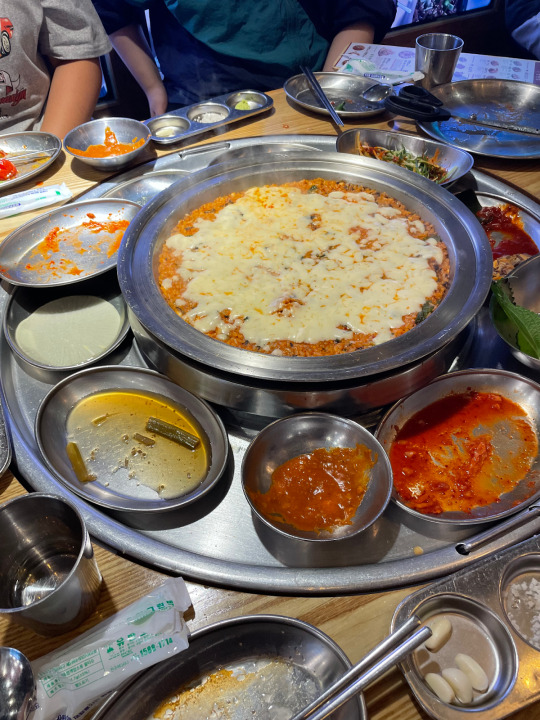
In case you couldn’t tell, bingsu is a big deal here. And of course we ended the night with some. We shared some new flavors: tiramisu and mango apple cheese.

Wednesday was pretty uneventful. I had my painting final and we were given 2 hours to paint anything we wanted to, using the techniques we learned. It could be the plants we learned, something from Korea, or just anything we wanted. I painted the key parts of Korea for me which was basically Ewha’s ECC and all the field trips. I also included some flowers we learned.

For dinner Grace and I went to this place called Witch’s Kitchen. It’s a witch themed restaurant with a vibe crossed between Halloween and Harry Potter. Some of the food options were decorated in a way that made it all more fun.
We were most excited for the drinks. I heard that they served them in blood bags and that they did. Each table had one of those liquid IV stands they give people at the hospital and filled them with our drinks. We got to control how much we wanted in our cups and it was really fun.


I spent the rest of the night working hard on my visual journal project. I made a pop up book of where I’ve gone to in Seoul, basically the same thing as my painting final. It was a little bit of a risk since I’d never made a pop up book before. Albeit a little simple, it was a lot of fun. There was this lady that came into one of my classes in the second semester of freshman year who taught us the most basic techniques of pop up book making and I’ve wanted to give it a try ever since.

We had a mini exhibition within our class the next day and it was cool seeing what everyone else came up with.

Later that day, Bianca and I went out to check out the Gwangjang market, a traditional street market with lots of street vendors and mini restaurants. It was still light out when we got there so we got this white peach bingsu while we waited for the sun to set.
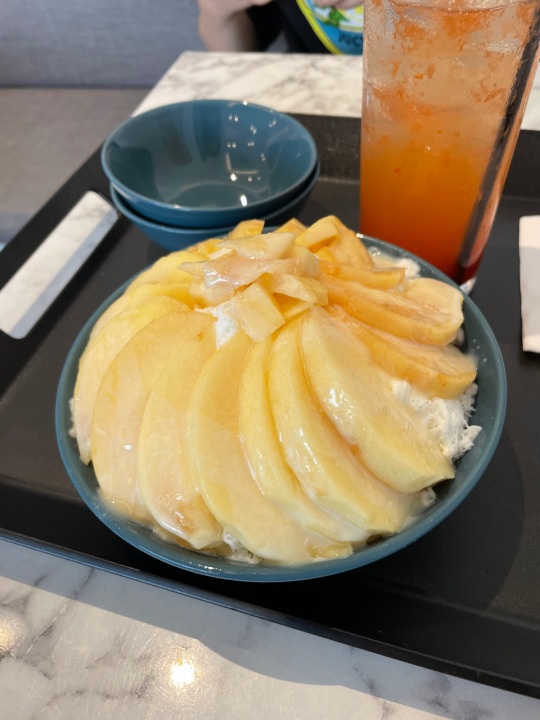
My friend Iris told me to go to Cheonggyecheon Stream which I’m pretty sure is the man-made stream my dad told me to check out as well. It stretched out for quite long. Here it is before the sunset.

Once we got back to the market, it was definitely a lot more lively. There were four main paths that we looked at.



We were looking for one thing to eat and luckily many of the restaurants there sold it. I’m serious when I say don’t knock it till you try it because multiple of my friends expressed their disgust, but it was actually pretty good. I’ve wanted to try this for the longest time ever and have always seen mukbangers and foodies eat this.
For those who haven’t been to guess it, it’s raw squid. This is often confused with live squid. To be fair, people here do actually eat live squid, but the raw squid we had was just raw, NOT alive. It’s only called live squid because the tentacle nerves continue to move after being chopped up.
Anyways, it was doused in sesame oil which made it good for me. I’m not a seafood girlie and don’t even know why I liked it, but it was fun to eat. We also got bibimbap with beef tartare (also raw) which was also good. This day was all about trying traditional things so instead of getting a basic drink, I opted for Sikhye, a traditional Korean fermented rice drink. I kept seeing it on the street there so I decided to try it out. I noted how it looked like something my mom had always made and Bianca said that was because Korea always steals stuff from China.
We also ordered bindaetteok, a mung bean pancake with bean sprouts in it. It was very very good.
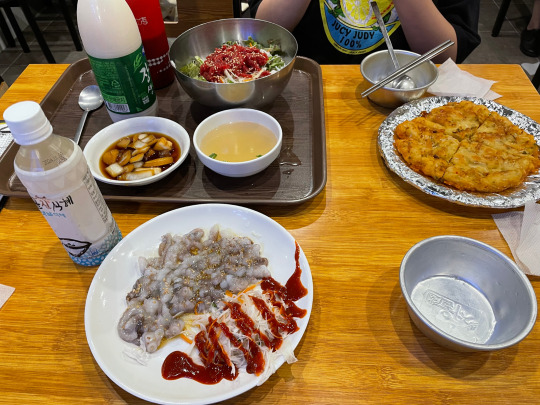
We were quite full at the end of this so decided to get a snack that was truly authentic and worth it. I wanted Hotteok, a sweet filled pancake. My mom sometimes makes this for breakfast so it was cool to have it from the actual streets.
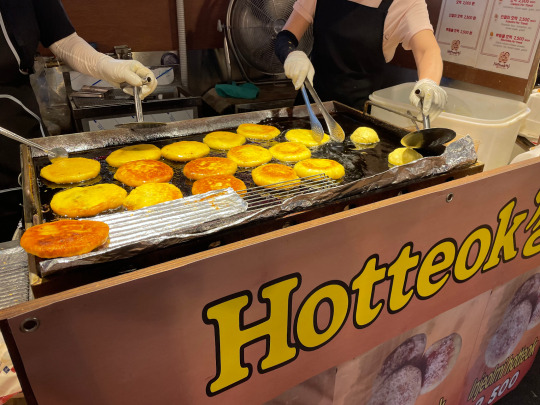
The stream was really nice to look at and walk along once dark. We spent a little more time there before going back.

3 notes
·
View notes
Text
Whole Egg and Yolk Powder Market: Cost, Price, Revenue Analysis Industry Chain Report 2025
"Global Whole Egg and Yolk Powder Market 2025 by Manufacturers, Regions, Type and Application, Forecast to 2031" is published by Global Info Research. It covers the key influencing factors of the Whole Egg and Yolk Powder market, including Whole Egg and Yolk Powder market share, price analysis, competitive landscape, market dynamics, consumer behavior, and technological impact, etc.At the same time, comprehensive data analysis is conducted by national and regional sales, corporate competition rankings, product types and applications. This report is a detailed and comprehensive analysis for global Whole Egg and Yolk Powder market.
According to our (Global Info Research) latest study, the global Whole Egg and Yolk Powder market size was valued at US$ 1418 million in 2024 and is forecast to a readjusted size of USD 2061 million by 2031 with a CAGR of 5.6% during review period.
Key Highlights of Whole Egg and Yolk Powder Report 1.Research the competitiveness analysis of major global Whole Egg and Yolk Powder players and manufacturers, by company profile, market revenue, sales volume, gross margin, key development strategies. Major companies covered include OVODAN、Dalian Lvxue、Ovovita、Ovobrand、Wulro B.V、IGRECA、Agro Egg、AVANGARDCO、Ovostar Union、Bouwhuis Enthoven、EiVita、Interovo Egg Group (BV NIVE)、Michael Foods、Ovobel Foods、Rose Acre Farms、SKM EGG Products 2.Evaluate the growth potential of the Whole Egg and Yolk Powder market, including global Whole Egg and Yolk Powder market size and forecast analysis by consumption value, 2020-2031 3.Identify the global and key country Whole Egg and Yolk Powder market opportunity size, covering global Whole Egg and Yolk Powder market share and forecasts (consumption value) by region and country, 2020-2031 4. Statistical analysis of global Whole Egg and Yolk Powder market share and development prospects, and segmented by product type and application, 2020-2031 5. Analyze the industry development factors affecting the Whole Egg and Yolk Powder market, and provide key insights into market opportunities, drivers, restraints, new market opportunities or policy factors.
Main Content Chapter 1, Whole Egg and Yolk Powder product scope, market overview, Product Overview and Scope, Consumption Value, Market Size by Region 2020 VS 2024 VS 2031 Chapter 2, top manufacturers of Whole Egg and Yolk Powder , with Major Business, price, sales, revenue and Gross Margin and Market Share (2020-2025) Chapter 3, focus on analyzing the Whole Egg and Yolk Powder competition status, sales volume, revenue and global market share of the top 3 and top 6 market players (2020-2025) Chapter 4, to segment the Whole Egg and Yolk Powder market size by Type with Consumption Value and Market Share by Type (2020-2031) Chapter 5, to segment the Whole Egg and Yolk Powder market size by Application, with Consumption Value and Market Share by Type (2020-2031) Chapter 6, 7, 8, 9 and 10, to break down the sales data of Whole Egg and Yolk Powder by countries, including sales volume, sales value, revenue, consumption value and market share of key countries in the world (2020-2031) Chapter 11, Whole Egg and Yolk Powder market dynamics, drivers, restraints, trends and Porters Five Forces analysis Chapter 12, the key raw materials and key suppliers, and industry chain of Whole Egg and Yolk Powder industry Chapter 13 and 14, to describe Whole Egg and Yolk Powder sales channel, distributors, customers, research findings and conclusion.
Reasons for choosing this report 1. Competitor analysis: Understand the Whole Egg and Yolk Powder market position, market share and share of major competitors, and quickly develop efficient marketing methods and market strategies to maintain a leading position in the market landscape. 2. Expand business and develop new markets: Understand the driving growth factors and constraints of the market through Whole Egg and Yolk Powder market research reports, gain insights and make wise investment decisions, and provide analytical references for new market development. 3. Identify target customers and M&A planning: Identify the top manufacturers in the Whole Egg and Yolk Powder market, make strategic decisions on mergers and acquisitions, and classify potential new customers or partners in the target population to better penetrate the market and enhance the competitiveness of the company's core business. 4. Reduce cumbersome data collation: Understand the focus areas of leading companies through the results of extensive research and analysis conducted by an experienced team of Whole Egg and Yolk Powder market researchers to develop wise tactical plans. 5. Presentation support: Use reliable, Whole Egg and Yolk Powder high-quality data and analysis to strengthen your internal and external presentations and provide strong data support.
About Us Global info Research is a report publisher that focuses on collecting global industry information, mainly providing market strategy analysis for enterprises and helping users understand industry development opportunities. It focuses on industry research, market share analysis, market share, customized research, corporate strategic planning, industry chain research, database analysis and top industry survey services. The market research reports published by Global info Research are trusted by more than 30,000 companies. It provides analytical report support for enterprises in the market competition landscape and assists enterprises in making wise investment decisions.
0 notes
Text
Egg Membrane Powder Manufacturer and Supplier in India for Optimal Joint Support Brings Pharma-Grade Quality– Trusted by Caltron Clays & Chemicals

1. Caltron Clays & Chemicals – Trusted Egg Membrane Powder Manufacturer and Supplier in India for Natural Joint Care
Caltron Clays & Chemicals, a renowned Egg Membrane Powder manufacturer and supplier in India, leads the industry with its advanced joint care ingredient for pharmaceutical applications. Rich in collagen, glucosamine, chondroitin, and hyaluronic acid, Caltron’s Egg Membrane Powder supports cartilage repair, mobility enhancement, and inflammation reduction. This pharma-grade solution meets the growing demand for natural, effective, and clean-label joint health ingredients.
2. Bioactive Profile of Caltron’s Egg Membrane Powder for Cartilage and Connective Tissue Health
Caltron’s Egg Membrane Powder is extracted from the eggshell membrane and is packed with:
Type I Collagen – Rebuilds cartilage structure and improves joint integrity.
Glucosamine and Chondroitin – Reduces stiffness and enhances flexibility.
Hyaluronic Acid – Improves joint lubrication and reduces friction.
Elastin and Glycosaminoglycans – Supports tissue elasticity and resilience.
These nutrients work in synergy to deliver clinically relevant support for joint repair and tissue regeneration.
3. Natural Joint Health Solution for Clean-Label Nutraceuticals and Pharma Brands
Caltron’s Egg Membrane Powder aligns with clean-label formulation demands in both pharmaceutical and nutraceutical sectors. Key benefits include:
Multi-functional activity – Addresses multiple joint health concerns.
Superior absorption – Bioavailable nutrients ensure rapid effectiveness.
Free from allergens and solvents – Safe for sensitive populations.
Sustainable sourcing – Derived from eco-conscious extraction processes.
Ideal for brands looking to create safe, natural joint supplements.
4. Clinical Effectiveness of Egg Membrane Powder for Joint Inflammation and Mobility
Egg Membrane Powder is proven to improve mobility and reduce joint pain via:
Collagen regeneration for cartilage protection
Increased synovial fluid production through hyaluronic acid
Inflammatory marker reduction via bioactive peptides
Connective tissue repair support for lasting recovery
This makes Caltron’s ingredient effective in managing arthritis, injury recovery, and age-related joint degradation.
5. Advanced Processing and Quality Control at Caltron’s GMP-Certified Facilities
Caltron’s manufacturing process guarantees consistency and performance:
Enzymatic extraction without chemicals
Neutral flavor and odor for versatile applications
Customizable mesh sizes for flexible formulations
Certified ISO, GMP, FSSAI compliance
Batch-wise lab testing for potency and microbiological safety
As a premium Egg Membrane Powder supplier, Caltron ensures a pharma-ready ingredient for global markets.
6. Improving Supplement Retention with Caltron’s Natural Egg Membrane Powder
A European nutraceutical brand integrated Caltron’s Egg Membrane Powder into their joint care line. The results:
45% increase in user satisfaction
Faster relief reported within 7–10 days
Shift to clean-label positioning increased market traction
Higher reorder rate across retail partners
Caltron supported the client with formulation insights and end-to-end implementation guidance.
We provide co-formulation support with herbal actives, omega-3s, and marine minerals.
7. Caltron’s Export Capabilities for Bulk Supply of Egg Membrane Powder Globally
Caltron serves global markets with seamless logistics and full regulatory support:
Scalable manufacturing for large volumes
Private label and white-label options
Export documents (COA, MSDS, Phytosanitary certificates)
Established supply to USA, Europe, South Korea, South Africa
We ensure on-time delivery and documentation for compliant, global B2B trade.
8. Why Pharma Formulators Choose Caltron’s Egg Membrane Powder for Joint Support Innovations
Pharma and supplement brands benefit from:
Comprehensive joint health in one ingredient
Consumer-preferred natural origin claims
No artificial binders or fillers
Scientifically supported and cost-effective
Backed by technical and regulatory guidance
Our product accelerates time-to-market while boosting credibility with end-users.
9. Work with Caltron Clays & Chemicals – India’s Top Egg Membrane Powder Manufacturer for Joint Health Products
Caltron Clays & Chemicals is your go-to partner for pharma-grade joint care ingredients. As a leading Egg Membrane Powder manufacturer and supplier in India, we deliver quality, compliance, and innovation for your joint health product line.
🔹 Visit us: https://caltronclays.com/ 🔹 Office Address: 210 & 211, Level 2, Orbit Premises, Mind Space, Chincholi, Malad (West), Mumbai – 400064, India 🔹 Email: [email protected] | [email protected] 🔹 Phone: +91-22-3571 9844 / +91-22-4010 6828 🔹 Google Maps: Click to Navigate
0 notes
Text
Global Allulose Market: Key Players, Challenges, and Opportunities
Rising Demand for Low-Calorie Sweeteners and Health-Conscious Consumer Trends Fuel Growth in the Allulose Market.

The Allulose Market Size was valued at USD 250.5 million in 2023 and is expected to reach USD 522.1 million by 2032 and grow at a CAGR of 8.5% over the forecast period 2024-2032.
The Allulose Market is experiencing significant growth due to the rising demand for low-calorie, natural sugar alternatives in food and beverage industries. Allulose, a rare sugar with only 10% of the calories of regular sugar, offers the same sweetness and taste profile as sucrose without spiking blood glucose levels. Increasing health-conscious consumer preferences, the rise in diabetic-friendly and keto-based products, and government initiatives promoting sugar reduction are key factors driving market expansion.
Key Players in the Allulose Market
Anderson Global Group (Allulose Powder, Allulose Liquid)
Bonumose LLC (Allulose Syrup, Allulose Crystals)
Cargill Inc (Allulose Sweetener, Allulose Blend)
CJ Cheil Jedang (Allulose Powder, Allulose Granules)
Eat Just Inc. (Just Egg (with allulose), Just Cookies (with allulose))
Ingredion Incorporated (Allulose Sweetener, Allulose Liquid)
Matsutani Chemical Industry Co. Ltd (AminoSweet (Allulose), AjiSweet (Allulose))
Samyang Corporation (Allulose Powder, Allulose Syrup)
Tate & Lyle (Allulose Sweetener, Lyle's Golden Syrup (with allulose))
Wellversed (Allulose Sugar Substitute, Wellversed Allulose Powder)
Future Scope of the Market
The Allulose Market is expected to grow significantly, driven by:
Rising demand for low-calorie and diabetic-friendly sugar substitutes.
Expanding use in baked goods, beverages, dairy products, and confectionery.
Approval by regulatory bodies such as the FDA and EFSA, boosting consumer confidence.
Increased R&D investments for large-scale production and cost-effectiveness.
Growing adoption in sports nutrition and weight management products.
Emerging Trends in the Allulose Market
A major trend in the Allulose Market is its increasing integration into clean-label and natural food products. With health-conscious consumers actively seeking sugar alternatives, food manufacturers are reformulating their products to include low-calorie sweeteners like allulose. The keto and diabetic-friendly food sectors are witnessing rapid growth, fueling demand for sugar replacements with minimal impact on blood glucose levels. Additionally, technological advancements in enzyme-based production are making allulose more cost-effective and widely available. Regulatory approvals across regions like North America, Europe, and Asia-Pacific are further expanding market opportunities.
Key Points:
Growing consumer preference for low-calorie, natural sugar substitutes.
Rising application in the food and beverage industry, including bakery, confectionery, and dairy.
FDA recognition of allulose as safe, leading to wider acceptance.
Increasing adoption in diabetic-friendly and ketogenic diets.
Technological advancements improving production efficiency and reducing costs.
Asia-Pacific emerging as a high-growth market due to rising health awareness and urbanization.
Conclusion
The Allulose Market is set for strong growth, driven by health trends, sugar reduction initiatives, and expanding applications in food and beverage industries. As consumer awareness of low-calorie sweeteners continues to rise, innovations in production and increasing regulatory approvals will further accelerate market expansion.
Read Full Report: https://www.snsinsider.com/reports/allulose-market-1417
Contact Us:
Jagney Dave — Vice President of Client Engagement
Phone: +1–315 636 4242 (US) | +44- 20 3290 5010 (UK)
#Allulose Market#Allulose Market Size#Allulose Market Share#Allulose Market Report#Allulose Market Forecast
0 notes
Text
Dried Eggs Market Overview: Growth and Trends
Introduction
The global dried eggs market has been experiencing steady growth, driven by rising consumer demand for convenient, long-lasting, and protein-rich food products. Dried eggs, also known as powdered eggs, are widely used in the food industry due to their extended shelf life, ease of transportation, and nutritional benefits. This article provides an overview of the dried eggs market, its growth drivers, trends, and future prospects.

Market Growth and Size
The dried eggs market has witnessed significant expansion over the past decade, with increasing adoption in both household and commercial applications. According to market research, the sector is expected to grow at a compound annual growth rate (CAGR) of approximately 6-8% over the next five years. The demand for dried eggs is fueled by their versatility in baking, confectionery, and processed food production.
Key Drivers of Market Growth
Several factors contribute to the growth of the dried eggs market:
Increased Demand for Processed and Convenience Foods – With busy lifestyles, consumers are opting for ready-to-eat and easy-to-prepare food products, boosting the demand for dried eggs in food processing.
Extended Shelf Life and Easy Storage – Unlike fresh eggs, dried eggs have a longer shelf life, making them a preferred choice for food manufacturers and consumers in regions with limited refrigeration facilities.
Growing Popularity of Protein-Rich Diets – The increasing awareness of protein consumption for health and fitness has driven the demand for dried eggs in dietary supplements and sports nutrition products.
Cost Efficiency and Bulk Availability – The cost-effectiveness of dried eggs compared to fresh eggs, especially for bulk purchases in foodservice industries, has contributed to their widespread adoption.
Rising Demand in the Bakery and Confectionery Sector – Dried eggs are commonly used in baking and confectionery applications, where they provide better consistency, stability, and ease of handling.
Market Trends
Several key trends are shaping the dried eggs market:
Organic and Non-GMO Dried Eggs – The growing preference for organic and non-GMO food products is pushing manufacturers to produce dried eggs that meet these criteria.
Technological Advancements in Egg Processing – Innovations in drying technology have improved the quality, texture, and nutrient retention of dried eggs, making them more appealing to consumers and food manufacturers.
E-commerce Expansion – The rise of online grocery shopping has boosted the availability of dried eggs through digital platforms, making them more accessible to consumers worldwide.
Increased Use in Plant-Based and Alternative Protein Products – While dried eggs are animal-based, they are being incorporated into hybrid protein formulations to cater to flexitarian consumers.
Regional Insights
The dried eggs market varies across different regions:
North America and Europe lead the market due to high demand from the bakery, confectionery, and processed food industries.
Asia-Pacific is witnessing rapid growth due to increasing urbanization, changing dietary patterns, and growing awareness of protein-rich foods.
Latin America and the Middle East & Africa are emerging markets where demand is driven by cost-effective food solutions and increasing industrial applications.
Challenges and Restraints
Despite the promising growth, the dried eggs market faces several challenges:
Price Volatility of Raw Materials – Fluctuations in egg prices due to disease outbreaks or supply chain disruptions can impact the cost of dried eggs.
Consumer Perception and Preference for Fresh Eggs – Some consumers still prefer fresh eggs over dried versions, posing a challenge for market expansion.
Regulatory and Quality Compliance – Stricter food safety regulations and quality standards can impact manufacturing and distribution processes.
Future Outlook
The dried eggs market is poised for sustained growth, driven by advancements in food processing, changing consumer preferences, and expanding applications in various industries. The increasing adoption of organic and high-quality dried egg products, coupled with improvements in packaging and distribution, will further enhance market opportunities. Companies investing in sustainable sourcing, technological innovations, and strategic partnerships are likely to gain a competitive edge in the evolving landscape.
Conclusion
The dried eggs market is on a steady growth trajectory, supported by its numerous advantages over fresh eggs, including longer shelf life, convenience, and cost efficiency. As consumer preferences continue to shift toward high-protein, easy-to-use food products, the market is expected to expand further. Businesses focusing on innovation, quality assurance, and sustainability will play a key role in shaping the future of the dried eggs industry.
0 notes
Text
0 notes
Text
A Deep Dive into the U.S. Protein Supplements Market: Insights and Analysis
The U.S. protein supplements market size is expected to reach USD 3.52 billion in 2030, growing at 7.8% CAGR from 2023 to 2030, according to a new report by Grand View Research, Inc. The market is experiencing steady growth driven by several factors, including the increasing demand for sports nutrition supplements and the rising number of health-conscious consumers.
The growing awareness among individuals in the U.S. about maintaining their health and well-being, along with the proliferation of gyms, health clubs, and fitness centers, is expected to drive the demand for sports nutrition products. The rise in obesity cases in the country is another factor contributing to the increased demand for sports nutrition products, as consumers engage in sports and physical activities to combat obesity. Additionally, the participation of U.S. athletes in national and international sporting events is anticipated to fuel the demand for sports nutritional supplements.
Whey protein, derived from milk, is a commonly used ingredient in protein powders and beverages. Its inclusion allows manufacturers to reduce the use of synthetic ingredients, making their products more natural. With consumers from the U.S. becoming increasingly concerned about the ingredients in the products they consume, the use of organic ingredients in sports nutritional products is gaining traction. The market is also benefiting from the growing demand for sports nutrition products among consumers who engage in occasional physically demanding activities.
Gather more insights about the market drivers, restrains and growth of the U.S. Protein Supplements Market
U.S. Protein Supplements Market Report Highlights
• Animal-based protein supplements held the largest market share in 2022 owing to the presence of higher protein concentration and are, therefore, preferred for manufacturing supplements
• Protein powder emerged as the largest product segment with the highest revenue share in 2022. Plant-based protein powders are also gaining popularity, driven by the increasing number of consumers opting for vegan or vegetarian diets
• Asia Pacific is estimated to grow significantly over the forecast period owing to rising awareness among consumers regarding the important role of gut health in overall wellness
U.S. Protein Supplements Market Segmentation
Grand View Research has segmented the U.S. protein supplements market based on source, product, application, and distribution channel:
U.S. Protein Supplements Source Outlook (Revenue, USD Million, 2017 - 2030)
• Animal-based
o Whey
o Casein
o Egg
o Fish
o Others
• Plant-based
o Soy
o Spirulina
o Pumpkin Seeds
o Wheat
o Hemp
o Rice
o Pea
o Others
U.S. Protein Supplements Product Outlook (Revenue, USD Million, 2017 - 2030)
• Protein Powder
• Protein Bars
• RTD
• Others
U.S. Protein Supplements Application Outlook (Revenue, USD Million, 2017 - 2030)
• Sports Nutrition
• Functional Foods
U.S. Protein Supplements Distribution Channel Outlook (Revenue, USD Million, 2017 - 2030)
• Supermarkets
• Online Stores
• DTC
• Others
Order a free sample PDF of the U.S. Protein Supplements Market Intelligence Study, published by Grand View Research.
#U.S. Protein Supplements Market#U.S. Protein Supplements Market Size#U.S. Protein Supplements Market Share#U.S. Protein Supplements Market Analysis#U.S. Protein Supplements Market Growth
0 notes
Text
0 notes
Text
0 notes
Text
Baking Ingredients Market - Forecast(2024 - 2030)
Baking Ingredients Market Size is forecast to reach $25411 Million by 2030, at a CAGR of 6% during forecast period 2024-2030.Food Ingredients used in Bakeries are known as bakery ingredients. Some of the most commonly used bakery ingredients include baking powder, flour, butter, baking soda, eggs, honey, yeasts, fruits, nuts, additional flavors and flavors enhancers and color additives. These ingredients hold various functionalities like performing emulsification, protein strengthening and maintaining freshness in baked food.
0 notes
Text

Egg Powder in the Food Industry: Benefits and Market Potential
## Introduction
Egg powder is an important constituent used in the food processing industry. The dehydrated product comes from spray drying of whole eggs, egg whites, or egg yolks, which after further processing yields a fine powder that gets easily reconstituted with water. This form of egg offers various advantages over fresh eggs that make it a strong tool for manufacturers across food industries. We will discuss in this article the benefits of egg powder in their applications across the food industry and the potential of this versatile ingredient in the market.
## Advantages Over Fresh Eggs
### Extended Shelf Life
One of the greatest advantages of egg powder is that its shelf life can be extended. Unlike fresh eggs, which are to be stored in the refrigerator and have a limited life expectancy, egg powder may be stored at room temperature for as long as two years without going bad. This has made it ideal for food manufacturers who desire to have a long-lasting supply of eggs without the risk of it going bad.
Other than that, it is also much more convenient to store and transport. Fresh eggs, for instance, are very fragile and have to be handled with extreme care to avoid breakages. The egg powder, on the other hand, is light and can be packed in huge quantities, so there is very little chance it will suffer from any damage during shipment. Furthermore, due to the nature of egg powder, it saves space that is majorly valuable for large food production houses.
### Uniformity and Control of Quality
Same ingredients ensure uniformity in food products. Uniform taste, texture, and color offered by egg powder guarantees that the final food product is the same every time. Fresh eggs are hard to get the same way as all of them differ by size, weight, and quality. Standardized egg powder is used by the manufacturers to get the exact quality they want in each batch.
Ease of Use and Versatility
One can reconstitute dried egg powder into liquid egg simply by adding water. This facility makes it very convenient for food manufacturers because no breaking of eggs, no separation, or then beating is required. Applications of egg powder range from bakery products to instant meals, with the advantage of being able to measure them exactly to create the same dish every time.
#### Lesser Contamination Risks
Due to the process of pasteurization during its production process, the egg powder risks fewer chances of contamination by some harmful bacteria such as Salmonella. This, therefore, makes it a much safer choice for the food manufacturer by minimizing the risk of foodborne illnesses from raw eggs.
#### Cost-Effective
Compared to using fresh eggs, egg powder will often prove to be the more cost-effective option. This is considering the storage cost, transportation cost, and handling of the fresh ones. Lengthy shelf life and reduced wastage add to food manufacturers' cost-saving advantage.
## Applications in the Food Industry
### Bakery Products
Due to the ability to replicate functional properties such as that of fresh eggs, egg powder finds wide application in the baking industry. This binding agent creates structure and helps to enhance texture in foods such as cakes, cookies, pastry items, and other baked goods. The consistency of quality in egg powder makes these bakery products consistent in their texture and appearance, making this a most preferred choice for commercial bakeries.
### Instant Meals
One of the major advantages of such instant meals and ready-to-eat products is the extended shelf-life and convenience provided to the dish by the egg powder. It can be reconstituted and easily applied in a whole spectrum of dishes, ranging from scrambled eggs to egg-based sauces and soups. In such a fast-moving convenience food scene, egg powder presents an instrumental solution for manufacturers who desire quality shelf-stable meals.
### Snacks and Confectionery
Egg powder serves as the base product of the sauce, used as an emulsifier, coagulant, texturizing agent, and browning agent. For example, it is used in the preparation of mayonnaise, hollandaise sauce, and béarnaise. The net profit margin contributed by egg powder varies according to the number of dishes prepared by each category.
### Dips and Dressings
In the manufacture of sauces and dressings, egg powder does the double function of thickening and emulsification. This helps to attain the smooth and creamy texture in products such as mayonnaise, salad dressings, and custard. On the other hand, since it is stable under a wide range of processing conditions, it becomes a friendly ingredient that any food manufacturer would like to use in their processing.
### Dairy Alternatives
For manufacturers of lactose-free products, egg powder is used to replace milk or cream in recipes with practically the same nutritional value but without the lactose. It is often used in non-dairy desserts and beverages where richness and mouthfeel are desired without traditional dairy.
### Nutritional Supplements
The powder is further used in making nutritional supplements. In such supplements, its high protein content and availability of essential amino acids make it an element of great importance. It is added to protein powders and meal replacement shakes for health-conscious consumers who are pressed for time to obtain their daily intake of nutritional food.
## Export Trends
### Global Demand for Egg Powder
Steadily increasing demand for egg powder is witnessed across the world due to the rising trend of processed foods and demand for ready-to-use, shelf-stable ingredients. Growing food industries towards ready-to-eat meals, snacks, other bakery products, etc., increase the demand for egg powder. Growing awareness about food safety and requirement of homogenous food quality during its production process results in increased use of egg powder.
Key Export Markets
The main destination markets of export for egg powder are the United States, European Union, China, Japan, and the Middle Eastern countries. These destination markets are characterized by high demand for processed foods and are building their reliance on imported egg powder to supplement production. Increasingly health-conscious eating patterns and a preference for foods that are convenient and rich in proteins have also raised demand for egg powder in such markets.
Export Potential from India
With its sufficiency in egg supply, and a very developed food processing infrastructure, India can well turn out to be a major exporting nation of egg powder too. Its rich agriculture and competent workforce are added advantages in the international competitive market. Moreover, its geographical location allows for easy access to the principal markets of Asia, Europe, and the Middle East.
Government support from India, especially for the food processing industry through initiatives such as the Make in India campaign and different export incentives, adds to the potential for exports in egg powder. With international quality standards and certifications, it becomes easy for Indian exporters to exploit the increasing demand for the product and establish a strong presence in the global market.
### Market Trends and Opportunities
The following are the reasons why the egg powder market will continue to register growth in the future:
1. **Rising Demand for Processed Foods**: Consumer lives are increasingly becoming busier; therefore, there is an increasing demand for ready-to-eat convenience foods. In this respect, egg powder becomes quite useful as an additive in processed food products due to its versatility and ease of use.
2. **Trends in Health and Wellness**: Due to increased awareness about health and wellness, a consumer now looks for foodstuffs or snacks that are high in protein content. Egg powder, one of the richest sources of protein with its added nutritional value, thus becomes a product in demand in formulations where health is a prime focus.
3. **Food Safety and Quality**: The growing pressure to ensure safety and homogenous quality in food production prompts manufacturers to resort to egg powder—a standardized ingredient. The egg powder is pasteurized during its processing to give out a safe and homogenous product that can comply with the strict quality requirements for international markets.
4. **Sustainable Packaging and Storage**: Sustainability in the food industry also impacts demand for egg powder. Long shelf life and lower refrigeration needs translate to decreased wastage of not only food but also energy—both highly articulated elements of many manufacturers' sustainability ambitions.
5. **Innovation in Food Products**: If anything, the versatility of egg powder allows for wide latitude of innovation—from protein-rich snacks to non-dairy alternatives. The possibilities will be endless as more and more consumers look for newer, more exciting food products.
## Conclusion end
An ingredient of value in the food industry, egg powder has a number of advantages over fresh eggs, such as a longer shelf life, easier use, and consistent quality. This therefore makes the application very vast, ranging from bakery products and nutritional supplements to instant meals and snacks, thus proving to be versatile and important in contemporary food production.
The demand for egg powder will continue to rise with increasing consumption of processed foods rather than fresh ones, a great emphasis laid on health and wellness, and a need for safe and consistent ingredients. With a strong agricultural base and advanced processing capability, India has high export potential in the egg powder market.
Glee Impex Private Limited commits to the supply of superlative egg powder by quality performance to take care of the divergent needs of the worldwide food industry. For additional information on our dehydrated range, please contact us:
**Call us**: +91-9319294022
**Mail us**: [email protected]
**Visit us**: [www.gleeimpex.com](http://www.gleeimpex.com)
0 notes
Text
0 notes